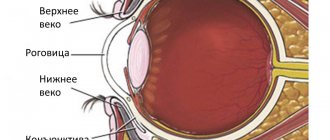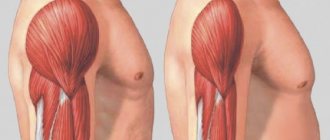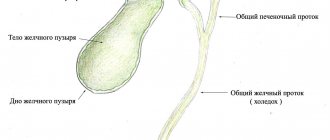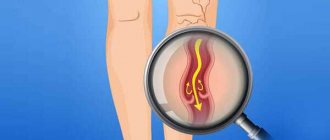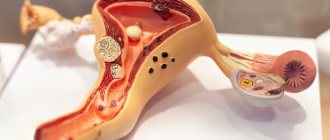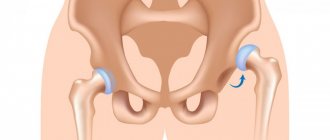Symptoms of periodontitis (photo), treatment and prevention
Periodontitis is a dental disease, inflammation of the gums. The term periodontium is used to collectively refer to the tissues that surround a tooth and hold it in the jaw. These are ligamentous fibers, connections between the mucosal surface and the crown, gingival cement and gingival bone.
The causes of periodontitis lie in infection of the gums through dental tissue (caries, plaque), dental pockets (gingivitis) or from internal sources of infection (internal inflammatory diseases). Let's look at the symptoms and signs of periodontitis, methods of its treatment and prevention.
Periodontitis and periodontal disease - what is the difference?
Often patients consider these two concepts to be the same dental disease, but this is not entirely true. With periodontitis, there is always an active inflammatory reaction, bleeding and swelling of the gums, periodontal pockets of varying depths and tooth mobility. With periodontal disease, the gums are dense, anemic, there are no pockets or tooth mobility, but the necks and roots are significantly exposed, as a result of which wedge-shaped defects often appear in these areas.
Stages of disease development
There are 3 stages of periodontal disease:
- Easy.
The patient has no complaints; very rarely there is a reaction to cold or hot food. The presence of periodontal disease can be determined during a dental examination. The mild stage of the disease is best treated.
- Average.
The roots of the teeth are exposed by an average of 4-6 mm. The patient begins to experience a burning sensation in the mouth, and there is an acute reaction to eating hot, cold or sour foods.
- Heavy.
The roots of the teeth are exposed by 8-10 mm. Chewing food causes severe pain.
Why does periodontitis develop?
Chronic localized periodontitis can appear for several reasons:
- The presence of carious cavities on the proximal side of the tooth.
- Inadequate prosthetics, after which wide crowns, incorrectly manufactured removable or bridge dentures injure the gums.
- Trauma to the gums as a result of physical impact (bruise) or malocclusion (creation of so-called supraocclusion). If the teeth do not close evenly and there is an area where biting occurs first (super contact), due to the increased load, periodontal inflammation develops in this area. The cause of supercontact may be a filling that overestimates the bite or the absence of part of the teeth.
- Unprofessional dental treatment, as a result of which fillings were installed that do not correspond to the anatomical shape of the tooth, as a result of which overhanging edges injure the edge of the gums and cause food retention in the spaces between the teeth, which leads to the development of the inflammatory process.
The causes and factors that provoke the development of a generalized inflammatory process in the periodontium are as follows:
- Impaired functioning of the immune system, leading to a decrease in the general and local protective response of the body;
- Poor oral hygiene, leading to the accumulation and activation of pathogenic microorganisms;
- Violation of the rate of metabolic processes in the periodontium;
- Reduced load on the dentogingival apparatus due to eating predominantly soft foods;
- Abnormal bite or incorrect location of individual teeth in a row (shifts and rotations along the axis);
- The presence of certain diseases (atherosclerosis, diabetes, gastrointestinal diseases);
- Exposure to occupational (chemicals) or environmental (increased background radiation) harmful effects, constant stress;
- Bad habits, unbalanced diet, excessive use of certain drugs;
- Pregnancy period (the first place at this time is the change in hormonal levels);
- Hereditary predisposition.
Acute periodontitis develops mainly after injuries - chemical (the effect of various substances on periodontal tissue), physical (thermal burns), extensive mechanical damage. This form of the disease can also develop as a complication of acute necrotizing ulcerative gingivitis.
Why does periodontal disease occur?
Ordinary people not connected with medicine often confuse the concepts of “periodontal disease” and “periodontitis”. The first is rare, no more than 8% of all people, mostly elderly. But even among young people, sudden and fleeting development of periodontal disease occurs.
The most commonly cited reasons for this problem are:
- Insufficient oral care. In particular, poor brushing of teeth, resulting in the formation of plaque.
- Unstable hormonal levels: pregnancy, puberty, menopause.
- Weak immunity due to a serious illness.
- The presence of diseases that primarily affect the immune system: cancer, HIV, diabetes.
- Bad habits. It has long been known that smoking destroys gum tissue, which means it contributes to the development of periodontal disease.
- Wrong lifestyle. Insufficient consumption of fresh fruits and vegetables weakens the immune system. Internal organs do not receive enough vitamins and minerals and begin to take them away from the bone tissue of the teeth.
- Long-term use of certain medications that reduce the normal flow of saliva. It provides gums with protection from external factors, such as eating rough food.
Symptoms
Periodontitis (see photo) is manifested by the progressive destruction of the alveolar processes (namely, the dental cells of these processes). The symptoms of the initial stages are scanty - bleeding gums, loose teeth, sometimes viscous saliva, plaque on the teeth. When the disease is active, due to the rapid destruction of the alveolar processes, the teeth gradually fall out.
The clinical manifestations of exacerbation of periodontitis are more varied: inflammation of the gums, purulent discharge from the periodontal pockets, bad breath, pathological mobility of teeth, and their displacement. Abscesses and fistulas on the gums, enlargement and soreness of the submandibular lymph nodes are common. A chronic course with frequent exacerbations of periodontitis may be accompanied by microbial allergies.
Second stage of periodontal disease
At the second stage, degenerative processes are observed, provoking the release of pus in the gum pockets, the development of bleeding, and pronounced periodic gingivitis. A purulent process develops in the cavity of the pockets, the gum structure becomes loose, a whitish coating appears and the pericervical area is exposed. Gradually, tooth mobility and cracks in which food accumulates appear. There is pain when biting.
The middle stage indicates the development of periodontal disease, the roots are exposed by approximately 40-50%, interdental spaces and gum pockets are formed. Inflammatory processes periodically appear in the pockets with the release of pus.
Stages of the disease
In dentistry, there are three stages of periodontitis:
- Grade 1 is a small depth of periodontal pockets (up to 3 mm), the appearance of periodic bleeding of the gums after cleaning. At this stage there is no pain or tooth mobility.
- 2nd degree - the pockets deepen up to 5 mm, the neck of the tooth is partially exposed, and a feeling of discomfort appears when in contact with cold and hot.
- Stage 3 is formed 4-5 years after the onset of inflammation (with the usual non-aggressive course of the disease). With severe gum damage, the pockets deepen beyond 6 mm, usually accompanied by the accumulation of food debris and the formation of pus. Pus comes out from under the tooth when you press on the gum. The teeth themselves become very loose and exposed.
Classification of the degree of tooth mobility:
- 1st degree. It is characterized by the possibility of tooth displacement by no more than one millimeter in the vestibulo-oral, bucco-lingual directions and to the adjacent tooth;
- 2nd degree – pathological mobility in the same directions by more than a millimeter, and the appearance of mobility in the palatal-distal direction;
- 3rd degree – teeth are mobile in all directions, including vertical. If some neighboring teeth are missing, then tilting is possible;
- 4th degree – the tooth is mobile in all directions, easily makes any forced movements, including around its axis.
In addition, there are several more varieties of the course of the disease. If gum inflammation develops very quickly, deep pockets up to 8-10 mm deep are formed in one to two months, then this is aggressive periodontitis. If the disease affects several teeth, then it is local periodontitis.
How to recognize periodontal disease
The signs of this dental disease are unclear and blurred. The patient is most often concerned about:
- exposure of the necks of the teeth;
- presence of tartar;
- burning gums;
- discomfort when eating.
Periodontal disease is not accompanied by pain, light pink gums are not visually inflamed, so the patient often postpones a visit to the dentist. In addition, the above symptoms of periodontal disease appear inconsistently.
Diagnostics
If any symptoms of periodontitis are detected, it is important to promptly consult a dentist and undergo a thorough examination, during which a specialist will be able to make the correct diagnosis or prescribe additional tests to differentiate the disease.
During the examination, the dentist will perform probing, which will help determine the depth of the gap between the gum and tooth. Based on the results of the examination, it will be possible to determine the degree of periodontitis.
Additional studies are prescribed:
- benzidine test (helps determine the presence of pus in the periodontal pocket);
- Schiller-Pisarev test (helps to see the inflammatory process in the gums at an early stage due to staining);
- radiography (to visualize the degree of bone tissue destruction);
- a smear from a periodontal pocket (determines causative bacteria);
- panoramic tomography (a full view of the affected jaw, mainly prescribed for suspected generalized periodontitis).
In cases where periodontitis is accompanied by general diseases, other tests may be prescribed to help determine the diagnosis and prescribe appropriate treatment.
The third stage of periodontal disease
This stage indicates the appearance of tangible atrophy of a total nature, the necks are greatly exposed and there is a strong displacement and instability of the tooth. The pain is constant and aching, abscesses are private, gum pockets become large and deep. In the absence of appropriate treatment, tooth loss occurs (the process spreads to the entire jaw), and osteomyelitis develops.
At the last stage, also called acute, serious deterioration of the condition is observed. Typically, patients consult a doctor precisely during this period, when pain, inflammation, and pus discharge appear. Severe exacerbation is possible during the dystrophic-inflammatory form, combined with the generalized form. Severe cavity abscesses are observed, and general intoxication due to purulent accumulations is possible. This period is characterized by a rapid course, the result of the acute stage is tooth loss.
How to treat periodontitis?
Effective treatment of this disease will largely depend on how far the inflammatory process has progressed. The more significant the level of bone loss around the teeth, the degree of tooth mobility, the more teeth were lost - the more difficult, longer and more expensive the treatment will be.
The first thing to do is make a treatment plan. This is not as easy to do as it might seem in reality. If the disease is mild, you may only need to consult a periodontist. In cases where the disease is severe, there are malocclusions, there are missing teeth or teeth that need to be removed during treatment, a joint consultation with a periodontist, an orthopedist (prosthetist) and a general dentist is necessary. Remember that it is necessary to plan prosthetics and dental treatment before the actual periodontal treatment begins.
The next stage is direct work with the gums, or rather deposits on the gums. As is known, a significant percentage of periodontitis depends on non-compliance with oral hygiene, namely incomplete cleaning of the area where the gums adhere to the tooth. As a result of this, dental plaque and subsequently tartar are formed, which contribute to the separation of the gums from the tooth itself.
Until dental plaque is removed, no treatment method will bring the expected result, and time will be wasted. Therefore, at the second stage, dentists begin to cleanse the oral cavity of plaque and tartar. This procedure is best carried out using the ultrasound method.
Medical procedures for the treatment of periodontal disease
Very often, treatment of a disease involves a series of procedures. Which ones?
First of all, splinting. It helps:
- stop further destruction of bone tissue;
- reduce tooth mobility;
- stop tooth decay.
The next procedure that is often used in the fight against periodontal disease is prosthetics. This is possible if the patient has not yet lost his teeth.
Another method of treating periodontal disease is surgery. As is known, the disease provokes the formation of deep periodontal pockets. They are an excellent environment for the proliferation of bacteria, and this in turn only aggravates the course of the disease. If the degree of periodontal disease is moderate to severe, the pockets can reach a depth of 10 mm. Their elimination will help stop the development of periodontal disease.
Drug treatment
Drug treatment of periodontitis can be divided into local and general:
- General therapy. A combination of antibiotics is prescribed. Moreover, depending on the severity of inflammation and the presence of concomitant diseases, antibiotics can be prescribed both in tablets and intramuscular injections (which, by the way, is preferable). Treatment of periodontitis with antibiotics is also carried out for 10 days, no less.
- Local therapy (in the oral cavity). It includes antiseptic mouth rinses, rinsing periodontal pockets from a syringe with antiseptic solutions, and applications of antimicrobial anti-inflammatory gels. The duration of local anti-inflammatory therapy is 10 days, treatment is carried out twice a day (morning and evening). Moreover, depending on the severity of the disease, the periodontist may prescribe rinses and applications for home use, or you will need to come to the dental clinic at least once a day. In this case, the doctor will rinse the periodontal pockets with antiseptic solutions from a syringe and also treat the gums with gel. The patient will have to do the second treatment independently at home.
- Physiotherapy. Local therapy may also include physical therapy. For example, laser treatment of periodontitis has recently been advertised. But you need to understand that treatment of periodontitis with laser or electrophoresis is only an auxiliary physiotherapeutic method that allows you to relieve the symptoms of inflammation only a little faster.
- Toothpastes. Special anti-inflammatory toothpastes can be an additional tool in complex treatment. There are very good pastes that will help quickly relieve inflammation and strengthen the gums.
In parallel with the removal of dental plaque and anti-inflammatory therapy, it is necessary to begin treatment of carious teeth and removal of non-viable teeth. If at the stage of drawing up a treatment plan the need for prosthetics with bridges or removable dentures was determined, then at this stage the teeth can be prepared for prosthetics, for example, tooth depulpation.
The next stage is the removal of dental plaque above and below the gums.
The main cause of the inflammatory process during periodontal disease is the presence of a large amount of plaque. Its formation is a consequence of insufficient oral care. Therefore, it is impossible to achieve effective treatment unless the root cause is removed. The optimal way to treat tartar and plaque in modern dentistry is the use of ultrasound.
The next stage of eliminating periodontal disease is therapy aimed at relieving inflammation. As a rule, it lasts about 10 days.
The course consists of rinsing the mouth for an antiseptic effect.
Algorithm:
- After breakfast, brush your teeth thoroughly for 3-6 minutes.
- Rinse mouth with chlorexidine (0.05%).
- Dry the gums using a clean cotton swab.
- Apply a special gel to the gums.
- Do not eat for at least 2 hours, drink only clean water.
Such step-by-step treatment is prescribed for mild cases of the disease. If the development of periodontal disease has reached its climax, you will need to take antibiotics (7-10 days). The doctor may prescribe tablets or intramuscular injections.
Treatment of periodontitis with folk remedies
In some cases, drug treatment is replaced with alternative medicine recipes.
The following recipes can be used at home:
- Fresh plantain juice. It rubs into the gums.
- Oak bark (two tbsp) and linden flowers (one tbsp). Mix, pour a large spoonful of the composition into a glass of boiling water. Cool, after straining, use as a mouth rinse 4-5 times a day.
- Sea buckthorn and fir oils. Equal parts of oils are mixed, a piece of bandage is soaked in the mixture, and the sore spot on the gum is massaged with it for ten minutes twice a day.
- Comfrey roots. One tablespoon of roots (crushed, dry) is poured into a glass of water and boiled over medium heat for 20 minutes. Use the decoction as a rinse twice a day.
- Juices of agave (aloe) or Kalanchoe. Make lotions with juices every 10 days, applying to the sore gum for 35 minutes.
Only after consultation with a doctor is it possible to use “grandmother’s recipes”, since the main principle of treating periodontitis remains the principle of not doing harm and not getting a complicated course of the disease.
Diagnosis of periodontal disease
Diagnosis of periodontal disease begins with a visual examination, and the first signs of the problem are excessive formation of tartar with atypical exposure of the upper peri-cervical part of the teeth. It is recommended to go to the doctor for an emergency examination in the following cases:
- exposure of the neck or root of the teeth with the absence of severe inflammation;
- gum retraction;
- the presence of periodontal (gum) pockets;
- violation of the inclination of the teeth, the appearance of gaps;
- diagnosing metabolic disorders, problems with the endocrine or cardiovascular system.
Diagnostic methods
It is necessary to understand that a disease such as periodontal disease leads to extremely negative consequences. This is atrophy of the tissues of the mucous membrane of the gums and periodontium, the appearance of side diseases of the jaw, and loss of teeth. Therefore, it is necessary to consult a doctor regularly, and not only when the disease reaches an advanced stage. This will prevent the problem, diagnose periodontal disease at an early stage, start treatment in a timely manner and save teeth.
Diagnosis of periodontal disease includes the following measures:
- biochemical, general blood tests;
- assessment of the state of the immune system (an immunogram is prescribed);
- study of leukocyte vitality;
- Rotter's test to study the saturation of the body with vitamin C (deficiency of this substance is one of the causes of tooth loss);
- diagnostics of proteolysis activity, that is, the process of protein decomposition in the body into enzymes;
- microbiological methods;
- smears, impressions of the oral cavity (taken from the surface of the mucous membrane).
Typically, a diagnosis of periodontal disease is prescribed by a dental therapist after a visit. The patient is referred to a periodontist if there are signs of periodontal disease, the specialist performs a visual examination and further measures are prescribed. X-rays are often required to show the general condition of the teeth, see what form the tissues are in and how deep the lesions are. Treatment is prescribed based on the results of the study; its methods can be different, depending on the degree of damage to the teeth and gums.
Surgery
As soon as the teeth become mobile, the dentist resorts to a treatment method such as splinting. With its help, the load is distributed from mobile teeth to stable ones.
There are three splinting methods:
- In the first case, when splinting, a horizontal bar and fiberglass tape are placed on several teeth, after which everything is filled with a light composite. This bar strengthens mobile teeth, stabilizing the row.
- Crowns are considered a more effective method. To do this, the upper part of the tooth is ground down and the root is filled. Crowns soldered together are placed on top. The material for crowns can be chosen depending on preferences and financial capabilities.
- The most expensive and most effective is the use of a clasp prosthesis. It is placed on the jaw and is additionally secured with a metal crossbar for greater stability.
Gingivectomy:
- Gingivectomy is usually used in the early stages of the disease. The essence of the operation is to clean the pockets and remove the inflamed areas of the gums by making an incision. The wound is treated with a special solution and filled with iodine. As a rule, gingivectomy is prescribed for complex surgery in the area of several teeth. The procedure is often confused with patch surgery.
Gingivoplasty:
- For periodontitis, gingivoplasty may be prescribed. It is necessary not only for aesthetic reasons, but also for cleaning pockets and restoring them. The operation is performed under local anesthesia after pre-treatment with an antiseptic. The dentist cleans the contents of the pockets, removes caries and tartar from the roots, and covers the cement of the tooth with a protective film. The gingival tissue is renewed with epithelium taken from the palatal part. Often, during gingivoplasty, bone tissue is restored or transplanted.
Flap operation:
- It can be carried out in several ways, but its main goal is to cleanse the roots of dangerous plaque and secure the gums in such a way as to hide the roots as much as possible. The surgical intervention takes place under local anesthesia, the dentist makes an incision into the tissue, performs root sanitation and puts the flaps back. Often, areas of the gum damaged by inflammation are removed. The pieces of epithelium are connected with sutures.
Prosthetics are performed for patients with missing teeth in the dentition. This is the final stage of treatment, before which the oral cavity was sanitized and gum inflammation, caries, etc. were eliminated. The purpose of this stage is to restore chewing function and correctly distribute the load on the patient’s healthy teeth, prevent their displacement, and restore the aesthetics of the oral cavity. In order to relieve the burden on the teeth before surgery, it is necessary to resolve the issue of prosthetics - install at least a temporary prosthesis for this period, which is subsequently replaced with a better one. Otherwise, after surgery, tooth mobility will only increase.
Laser treatment of periodontal disease
The procedure is prescribed and performed by the attending physician after a preliminary examination and x-ray. A laser light guide is inserted into the periodontal pocket, and tissue adhesion begins.
The method is considered one of the latest in modern dentistry. After the procedure is completed, the oral cavity remains sterilely clean, and no infections can enter there. There are several types of rays - diode, neodymium, etc. The attending physician selects the appropriate one in accordance with the treatment plan.
For mild periodontal disease, one procedure is sufficient. For moderate and severe – 2-4 sessions.
Prevention
To prevent such serious problems with soft tissues, it is best to stick to simple and accessible methods of prevention. Dentists recommend:
- avoid stressful situations;
- eat well and strengthen the immune system;
- do not cause general diseases;
- if even one unit falls out, install prostheses;
- lead a healthy lifestyle and give up bad habits;
- try not to damage soft tissues with sharp objects, avoid traumatic situations;
- treat any diseases in a timely manner and eliminate the first symptoms;
- Brush your teeth daily with a medium-hard brush, in circular motions, for at least five minutes;
- If a malocclusion is detected in childhood, it is better to correct it.
- do not forget about the importance of solid products that stimulate metabolic processes in the gums and naturally cleanse the surface of plaque;
- visit the dental office every six months for a thorough examination and detection of the first signs of any abnormalities, as well as for professional cleaning of plaque and tartar.
In addition to these general tips for maintaining health and maintaining good oral hygiene, you can also periodically massage your gums. To do this, apply light pressure on both sides with clean fingers. It is not difficult, and the whole procedure lasts no longer than 5-10 minutes. As a result, metabolic processes in periodontal tissues will resist the proliferation of bacteria.
Causes of periodontal disease
The main reasons that lead to the appearance of periodontal disease:
- disruption of the endocrine system;
- bone tissue injuries;
- lack of vitamins, in particular vitamin C;
- problems with the gastrointestinal tract, cardiovascular system;
- smoking, alcohol abuse;
- hereditary factor;
- the presence of malocclusion (chronic injuries to the mucous membrane);
- taking anticonvulsants;
- the presence of chronic diseases, including diabetes mellitus, hypertension, dystrophic neurogenic processes, atherosclerosis, hypoxia;
- physical inactivity;
- impaired blood circulation in tissues;
- improper dental care.
The exact list of causes of periodontal disease has not been fully established. Much depends on heredity, the functioning of the cardiovascular and endocrine systems, and the presence of diseases of internal organs.
It is impossible to become infected with periodontal disease, since this disease is not caused by viruses or microbes. Bed linen, dishes, cutlery, and kisses cannot cause disease transmission. But personal hygiene should still be given maximum attention, since one of the reasons for the development of lesions is precisely damage to the mucous membrane of the gums and bone tissue.
Treatment and prevention of periodontal disease
Treatment of periodontal disease is a long process that requires the patient to strictly adhere to the recommendations and prescriptions of the doctor. Measures to get rid of periodontal disease can be different, it all depends on the stage and how far the damage to the gums and dental tissues has progressed.
The following methods are used in treatment:
- physiotherapy;
- surgical treatment (curettage of periodontal pockets);
- splinting (for loose teeth)
- anti-inflammatory treatment;
- preventive measures (aimed at preventing the development of periodontal disease and its more complex stages, and are also used to normalize the condition of dental tissue).
The main set of measures is aimed at restoring and improving gum blood flow, reducing pain, and inflammation of periodontal tissue. Correct and timely treatment restores the normal supply of tissues with oxygen and nutrients, and allows you to stimulate the formation of new cells.
Physiotherapy
Physiotherapeutic treatment includes:
- ultrasonic treatment of the oral cavity;
- electrophoresis;
- KUF therapy.
Such treatment methods help improve the blood supply to the gum tissue and the general condition of the periodontium.
Treatment methods
Methods and procedures used to treat periodontal disease in dentistry:
- exposure to high pressure oxygen in hyperbaric chambers;
- electrophoresis;
- diadynamic currents;
- amplipulse therapy;
- darsonvalization of gums;
- UHF therapy;
- gum massage;
- local hypo- and hyperthermia;
- ultrasound therapy.
Psychosomatics of periodontal disease
Based on the results of many years of research, American scientists have come to the conclusion that dental diseases such as periodontal disease are directly related to high anxiety, depression and an acute sense of loneliness. This is explained by the fact that increased levels of the stress hormone - cortisol - in the blood negatively affect the condition of the gums and jaw bones. In addition, during periods of nervous tension, people begin to pay less attention to oral hygiene and increase the doses of alcoholic beverages, nicotine and medications, which also contributes to the development of various diseases.

